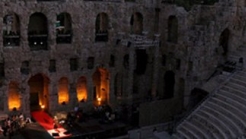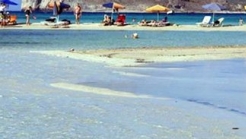

Greece
Chrissi, or Gaidouronisi, is an island in the Libyan sea, It is one of the many islands surrounding Crete. located south of Ierapetra.Chrissi is surrounded by many beaches with golden sand, after which its modern name was given.
Chrissi, or Gaidouronisi, is an island in the Libyan sea, located south of Ierapetra. It is one of the many islands surrounding Crete. It covers an area of 4.743 sq. kilometers, and has a population of 3. Chrissi is surrounded by many beaches with golden sand, after which its modern name was given. During the summer it attracts a lot of visitors, who approach the island through tourist boats from Ierapetra.
The island of Chrissi is one of the 81 uninhabited islands of Crete.
Located southeast of Crete and is just 8 miles from the Ierapetra the Libyan Sea. The length of the island is 5km keep any valuables the width 1 km away.
The beaches are of blond and white sand. Stand out for the Crystal clear crystal clear waters and the innumerable small seashells to Coasts.
On the island there is the church of Agios Nikolaos, which is likely to Built in the 13th century. The marine area around the Golden is full Fossils on a volcanic rock, which can be found here Then the island of Golden was still immersed in the sea. The total some 49 species of fossils found there, Dating from 350,000 to 70,000 years ago.
East of the Golden, at 700 meters there is another island called Mikronisi, where can be admired the hundred seagulls that Have found refuge there.
The Golden because of the natural ecosystem and the incredible beauty The has been affiliated in Continental protection program natural landscapes Beauty NATURA 2000.


The Athens festival is big celebration, which continues the active presence for 56 consecutive summers, which have shown some of the most famous names of the theater, music, dance, the field of music is Mitropoulos and Callas, Sain-Saens and Rostropovits, Pavarotti, Leonidas Kabakos


It is one of the last natural paradises of Crete. The visitors usually reach it via Kastelli in Kissamos, as part of a boat tour, passing first through the island of Gramvoussa.


The Museum, Pellas is located in the southeast of the foothills of the hill palace, in the northeastern part of archeological site
1039 Ε 6061 01515 00